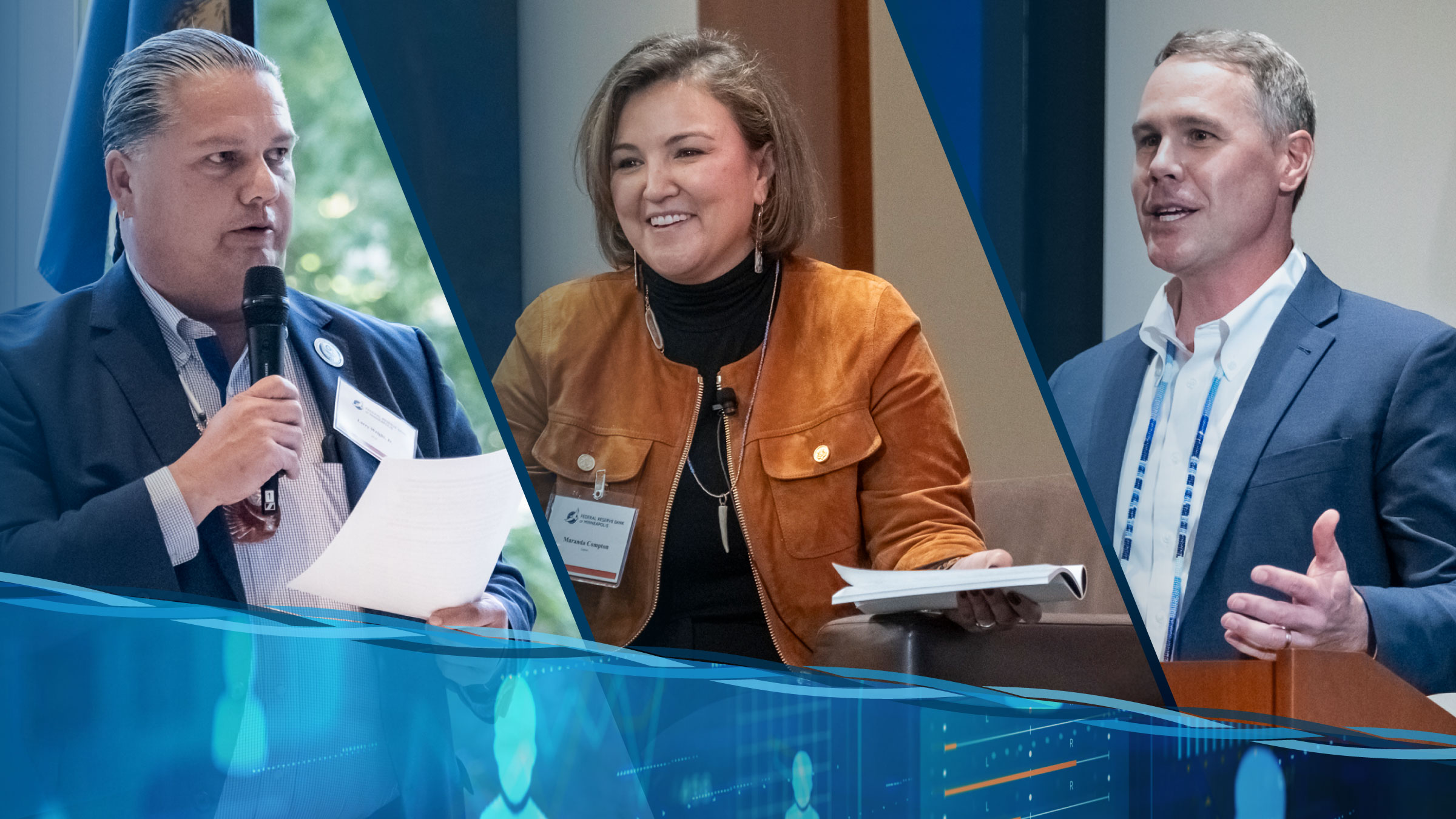Although many tribal members are drawn to reservations by cultural and familial ties, economic development strengthens the bond between native peoples and their homelands. New businesses and jobs, tribal officials say, are critical to raise living standards of members and address some of the social ills that plague tribal membership, which in turn will help sustain the tribes culturally and economically.
That strategy sounds good on paper, but is exceptionally difficult to put into action. Successful economic development—whether on rural reservations or in big cities—is like searching for the end of a rainbow. The journey is long and the goal elusive.
Daunting obstacles stand in the way of tribal economic development: small, scattered populations with entrenched poverty; inadequate infrastructure such as roads and water systems; scarce investment capital. In addition, businesses (especially nontribal firms) often face complex legal and administrative barriers to market entry.
But both the Rosebud and Cheyenne River tribes have opportunities to create jobs and increase economic productivity on their reservations in South Dakota. The mission of the Rosebud Economic Development Corp. is to generate revenue for the tribe and to promote economic development for the benefit of tribal members. It owns and manages 10 subsidiary companies, including auto service and parts businesses, and a propane delivery service, according to Wizipan Little Elk, REDCO director.
Some are modestly successful; some are not at all. When Little Elk took over REDCO two years ago, it was $4 million in debt with four failing businesses. Some that fail take a lot of precious tribal capital with them. The tribe invested $11 million in a grocery store that it has since pulled out of, according to Little Elk. It now leases the building to an outside operator.
Part of the difficulty is matching opportunities and job skills. Many highly educated and skilled tribal members often find themselves underemployed in immature economies on reservations. In other cases, the tribe doesn’t have the right type or amount of professional human capital to take advantage of employment opportunities, at least not yet.
Little Elk and others, for example, see opportunity embedded in the almost 1 million acres held in trust by the tribe and tribal members across the reservation, most of which lie in Todd County, but also in parts of nearby Melette and Tripp counties. A large portion of this land is arable. Yet in 2012, only one in eight acres in Todd County was planted with crops, according to the USDA. In Tripp County, which consists mainly of nontribal land, more than one in three acres is farmed.
Tribal members farm very little of the land in either county. Instead, most is leased to nontribal farmers, according to Little Elk, with contracts—and lease prices—handled in volume by the Bureau of Indian Affairs, the trustee for tribal lands.
“The old paradigm has basically been for the tribe to lease its ag land at dirt cheap prices to non-Indians and watch them become millionaires,” said Little Elk. “That’s happened for decades.” But the tribe does not have the capacity to negotiate contracts on the scale necessary for that to change.
The reservation also sits at the northern head of the Oglala Aquifer, one of the largest underground reservoirs of fresh water in the world. The aquifer supports almost 30 percent—about 13 million acres—of irrigated crop production in the nation’s heartland. Though most of the reservation sits atop the aquifer, the tribe irrigates less than 1,700 acres of land, according to Little Elk.
Other economic development opportunities are a matter of capturing built-in advantages of tribal sovereignty, including the sale of cigarettes, alcohol and blended gasoline (no sales tax), and the creation of foreign trade zones (no import duties) and holding companies for leveraged corporate buyouts (no corporate income tax), according to Little Elk.
“We really need to take a look at [opportunities] that come from simply being a tribal business. ... My biggest hope is that we can harness all of the advantages that we have and parlay those into a corporation that’s doing $100 million-plus [annually] and providing 1,000 good-paying jobs,” he said.
“My biggest fear is that we’re not moving quick enough” to turn things around for the tribe and its members, a problem exacerbated by the fact that REDCO “is still a small organization, and we don’t have nearly enough people or the required expertise to do what we need to do.”
Money is part of the problem. While the tribe has some resources, it also has abundant community needs, as socioeconomic data make clear. Money for economic development “is a stopper in the sense that if the tribe wanted to, it could allocate resources,” said Little Elk. “But they’re unable to because of the level of need [within the] tribe, and so the tribe is unable to really invest.”
Water grows business
The Cheyenne River Sioux Tribe has a growing reputation for entrepreneurship. Much of it flows from the Four Bands Community Fund, a tribally chartered organization that has made almost 1,000 small loans worth $7 million to kick-start business ventures of individual tribal members. The fund also provides business training and technical asÂsistance to entrepreneurs and financial literacy courses for adults. The organization has helped start or expand 100 businesses on the reservation.
Lakota Mowrer, Four Bands assistant director, believes much of the “entrepreneurial spirit” of the Cheyenne River Tribe stems from something it doesn’t have. “I would say [entrepreneurship] is more palpable because we are the only Great Plains tribe without a casino,” said Mowrer. Without proceeds from gaming, “our [tribe] needs to rely more heavily on innovation to fund operations, [and] innovation’s best conduit is entrepreneurs.”
But economic growth on the reservation is hampered by a lack of basic needs, especially housing, which several sources cited. Rundown or scarce housing can be a roadblock to returning home for tribal members, some of whom would bring business experience and other valuable skills to the local economy.
On the Cheyenne River Reservation, tribal officials say the shortage of housing—and economic development more broadly—stems from the lack of water infrastructure. Eagle Butte, the reservation’s largest city, reached its water capacity years ago and has enforced a moratorium on new hookups for the last 10 years.
The bare bones of a want-to-be-developed residential subdivision lie to the north of town. “There’s streets up there. There’s curbs, gutters, sewers”—all of the infrastructure to build 183 homes, including two apartment complexes, according to Wayne Ducheneaux, a tribal council member. There’s also a “great big white water tower. It’s empty. We don’t have enough pressure” to fill it, so the development lies dormant until the water system is upgraded and expanded. “We’ve had the money to build the houses; we haven’t had the water,” Ducheneaux said. And without water, “we haven’t been able to attract any business. ... It’s just been stifling.”
But a solution is in the works. Partnering with the federal Department of Agriculture, Eagle Butte is undergoing a $73-million sewer and drinking water expansion, with completion slated for early 2016.
The water upgrade also coincides with a recent settlement between the tribe and the federal government for the decades-long consequences of damming the Missouri River in the 1950s, which put many thousands of acres of tribal land—and its best farmland—underwater. Numerous tribes were affected, but none more than the Cheyenne River, according to Ducheneaux.
In 2001, the federal government established a $292 million trust, with all interest on the trust going to the tribe. The first interest payment of $144 million—an accrual of 10 years of interest—came to the tribe in 2011; smaller annual amounts are due in subsequent years.
Congress appropriated the money to address economic and infrastructure development and to improve education, health and social welfare on the reservation. Among many new projects receiving funding, $16 million went to the water expansion project, which required tribal cost-share (the remainder of the expansion will be funded by the federal government).
Once completed, the project will allow Eagle Butte to “grow by leaps and bounds,” said Ducheneaux. “When we get water here, we’ll be able to build more houses, and we’ll be able to bring in economic development.” Given pent-up demand because of the moratorium, Ducheneaux predicted, “you’ll see Eagle Butte triple in size in 10 years.”
Related content
Movin' on up
New research suggests that intergenerational income mobility is high in much of the Ninth District, and the reasons are both obvious and subtle
And now, a word from our sponsor
Calling home
Despite low upward mobility on many reservations, more Native Americans are calling them home, where culture often comes before commerce
Ron Wirtz is a Minneapolis Fed regional outreach director. Ron tracks current business conditions, with a focus on employment and wages, construction, real estate, consumer spending, and tourism. In this role, he networks with businesses in the Bank’s six-state region and gives frequent speeches on economic conditions. Follow him on Twitter @RonWirtz.





